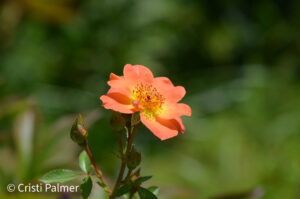
Tebuconazole was first registered in 1994 for peanut diseases. Since then its food use label has expanded to several other food crops. The first noncrop registration of Torque 3.6SC (tebuconazole) occurred in 2010 for ornamental horticulture growers, professional landscape managers and for golf course turf. Tebuconazole manages foliar ornamental horticulture diseases including powdery mildew and rusts. However, given that triazoles have a tendency to also exhibit impacts similar to growth regulators, the crop safety profile for Torque 3.6SC is not well known. During 2012 and 2013, the IR-4 Project completed 25 trials on 13 ornamental plant genera or species. In these trials, 8 species or genera exhibited minimal or no injury after foliar applications. Torque caused stunting in Pansy and Zinnia at the higher application rates. In one trial, Narcissus exhibited moderate injury after the third application; additional trials are warranted to determine whether number of applications or the crop cultivar might be the contributing factor for injury. For the remaining 2 crops, not sufficient information has been generated.


